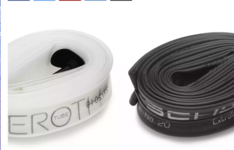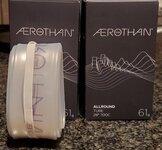I'm interested in the weight savings but also the claimed extra flat protection (vs standard tube). We (LBS and I) are building wheels for the Vado SL 5. I swapped the stock Specialized tires for the Schwalbe Marathon E-Plus which is a heavier and stiffer tire. I thought shaving some weight on the tubes could help offset the weight increase of the tire. But also that the Aerothan tubes would be a good complement for a tire that is advertised to be flat-less. Whereas on the Allant, I have the Tannus liners, I figured that Tannus+E-Plus tires would be too much weight and too much redundancy. Thus since we're building new wheels with carbon gravel rims and using the E-Plus tires - which are great in the gravel and mixed surface - I wanted to add the Aerothan tubes to the mix. I think the first reviewer that published something about them said they did improve the ride quality. He criticized their reparability but I think he used a standard glue patch - and Schwalbe sells a glue-less patch kit for these tubes. I have become a bit of a weight weenie with the Specialized given the SL motor and design intent of the bike. Last thing I wanted to do with buying a light e-bike with a light-assist motor is add a bunch of heavy components.

 www.bikeradar.com
www.bikeradar.com





